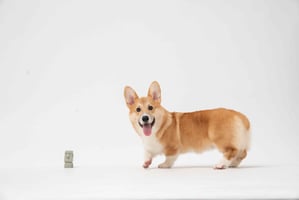Dogs that are reactive to other dogs can be a challenge to manage, but with the right strategies,...
Dog Training for Reactive Dogs: A Comprehensive Guide
Training a reactive dog can be a daunting task - but it doesn't have to be. With the right guidance, patience, and consistency, even the most reactive dogs can be trained to be calm and obedient. This guide provides an overview of the basics of dog training for reactive dogs, including tips for managing their behaviour and understanding their triggers.
What is a Reactive Dog?
A reactive dog is a canine that exhibits hyper-vigilance or reactivity to certain stimuli. This can include a variety of actions, such as lunging, barking, growling, snapping, and even biting. Reactive dogs may also become easily distracted and have difficulty focusing. It is important to note that reactivity is not the same as aggression; rather, it is a symptom of underlying anxiety or fear.
Reactive dogs tend to have a shorter attention span and may be more easily frightened by sudden movements or loud noises. As such, it is important to be patient and understanding when training a reactive dog.
Understanding Your Reactive Dog's Triggers
The first step in training a reactive dog is to understand what triggers their reactivity. Common triggers include: other dogs, people, loud noises, and unfamiliar environments. It is important to identify the specific triggers that cause your dog to become reactive, as this will help you to tailor the training to their individual needs.
Once you have identified the triggers, the next step is to begin desensitizing your dog to them. This can be done by gradually introducing them to the triggers in a safe, controlled environment. For example, if your dog is reactive to other dogs, you can start by having them meet one dog at a time in a quiet, enclosed area.
Developing a Positive Reinforcement Training Plan
Positive reinforcement is an important part of training a reactive dog. This involves rewarding desirable behaviour with treats, praise, or other rewards. Positive reinforcement helps to reinforce the desired behaviour, making it more likely to be repeated in the future. It is important to be consistent and to reward the desired behaviour immediately after it occurs.
Avoid punishing your dog for undesirable behaviour. Punishment can cause fear and anxiety, which can only worsen your dog’s reactivity. Instead, focus on rewarding the desired behaviour and redirecting your dog’s attention away from the trigger.
Creating a Calm Environment
Creating a calm environment is essential for successful dog training for reactive dogs. This means providing your dog with a safe, comfortable space where they can relax and feel secure. Make sure that their bed is in a quiet, low-traffic area, and provide them with plenty of toys and chew items to help keep them occupied.
When out in public, it is important to keep your dog on a short leash and to avoid letting them get too close to other dogs or people. Always be prepared to leave the area if your dog becomes overly aroused or reactive.
Managing Your Dog’s Reactivity
When your dog is in a situation that triggers their reactivity, it is important to remain calm and to use positive reinforcement to manage the situation. Here are some tips for managing your dog’s reactivity:
- Stay calm and use a soothing voice. Reactivity is often caused by fear or anxiety, so it is important to remain calm and to use a soothing voice when interacting with your dog.
- Redirect your dog’s attention. If your dog is showing signs of reactivity, try to redirect their attention away from the trigger by offering them a treat or engaging them in a game.
- Avoid punishment. Punishment can cause fear and anxiety, which can only worsen your dog’s reactivity. Instead, reward desirable behaviour with treats, praise, or other rewards.
- Avoid the trigger. If your dog is displaying signs of reactivity, it is best to avoid the trigger. This means leaving the area, or if possible, avoiding the trigger altogether.
Conclusion
Training a reactive dog can be a challenging task, but with the right guidance, patience, and consistency, it can be done. By understanding your dog’s triggers, developing a positive reinforcement training plan, and managing their reactivity, you can help your dog become a calmer, more obedient canine companion.



